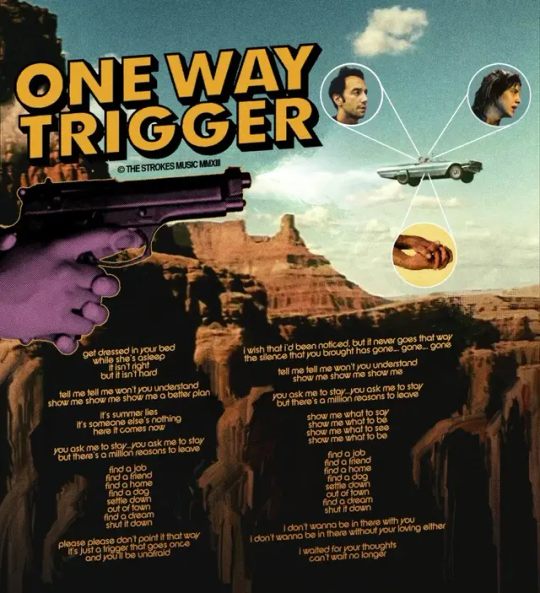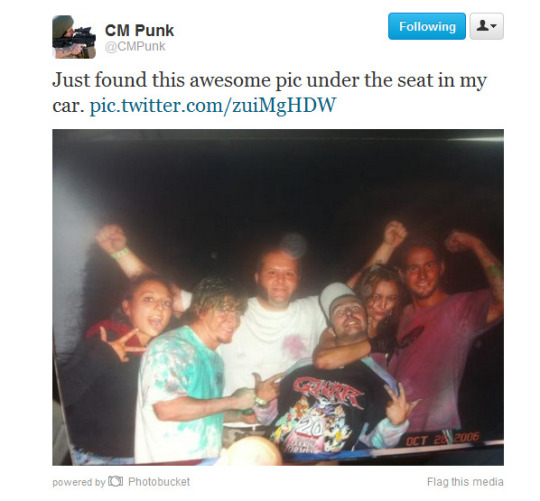#cm cars
Explore tagged Tumblr posts
Text
🚗 Looking for a Quality Used Car in Bangalore? 🚗
If you’re in the market for a reliable used car in Bangalore, look no further than CM Cars! They offer a fantastic selection of pre-owned vehicles that have been thoroughly inspected to ensure top-notch quality. Whether you’re after a sleek sedan or a rugged SUV, CM Cars has got you covered.
Check out their impressive inventory and find the perfect car to suit your needs and budget. Don’t miss out on great deals and excellent customer service!
🔗 Explore CM Cars’ Used Cars in Bangalore
Drive away with confidence and style today! 🚘✨
#used cars#second hand cars#cars#buy & sell cars#buy used cars#sell used cars online#cm cars#cm used cars
0 notes
Text
🚗 Looking for a Reliable Used Car in Bangalore? 🚗
If you’re in the market for a dependable used car, CM Cars has you covered! Their wide range of quality pre-owned vehicles ensures you'll find the perfect car to suit your needs and budget. From sleek sedans to sturdy SUVs, their selection is both diverse and affordable.
Why choose CM Cars? Their vehicles undergo rigorous checks to ensure they meet high standards of quality and safety. Plus, their transparent pricing and customer-focused service make buying a used car a breeze.
🚘💨 Happy car hunting!
Ready to drive away in your new car? Check out their collection here: CM Cars Used Cars in Bangalore
#used cars#second hand cars#cars#buy & sell cars#buy used cars#sell used cars online#cm cars#cm used cars
0 notes
Text














#o#criminal minds#criminalmindsedit#q#cm 2.06#next ep im not giffing anything w/ over like 3 lines of dialogue gkrt#but anyway ... im free.#'i guess thats it then' 😌 crazy ....#cm: the righteousness of the righteous shall be upon himself#i dont even really hte the 'never ever smile' line but they definitly could have reworded it or had something else instead#like it doesnt Really work but whatever i get the point#saying hes going 2 miss her when shes half way 2 her car like girl ur emotional repression will kill u
88 notes
·
View notes
Text
if i told you that i had two characters who'd written a song about a secretive doomed relationship together and released a poster for it featuring the two of them holding hands as they drove off a cliff together you'd probably tell me to stop being so on the nose but no. it's real and it's called one way trigger by the strokes

#sophaerostxt#the strokes#julian casablancas#albert hammond jr#cm era#casamond#whatever guys we can't decide on a ship name and i need to post about them Now this poster makes me INSANE#i need everyone to look at it like why the fuck#bands#god can we also talk about how the circle for the hands is in yellow to really contrast it against the bg and the other two circles w their#faces. highlighting its importance.#and also making it more compositionally balanced lol#and the way u can see their teeny tiny heads in the car but their hands are truly hidden so we would never see it without the circle#this poster makes me sickkk#oh and it's also a screenshot from thelma and louise aka the one where two women kiss and hold hands before driving off a cliff together.#WHATEVER.
57 notes
·
View notes
Text

43 notes
·
View notes
Text
morgan: "this unsub has a car...big enough to transport a body"

#what car isnt big enough to transport a body DEREK#the writers of this show are a mess sometimes lmao#cm rewatch
7 notes
·
View notes
Text
00s homophobia is so funny. morgan’s first female love interest episode is the one where he’s designated “empathizing with the gay serial killer” guy. like DONT worry this guy fucks miami pussy 👍
#cm#howling with laughter. they somberly put this gay man in the back of a police car#And immediately she’s like ‘’anyways we should fuck 😛😏’’ completely inappropriate contextually
8 notes
·
View notes
Text
those fuck-off big pickup trucks were already ridiculous when i saw them on my US visits but they undeniably get so much funnier whenever i see one in my narrow european streets, like. my guy. my dude. my pal. the small dick energy is off the charts. it's reaching critical levels. i'm getting second-hand brain damage watching you try to park that thang
#post brought to you by:#big pickup trucked on the side of a narrow street#that bitch was wider than any other car there#my bus took like 3 minutes carefully maneuvering past it cm by cm
6 notes
·
View notes
Text














do i spy a little hint of jealousy on jewel's face 👀
#that's an awfully suspicious amount of reaction shots of jewel if i may say so myself 🤔#summer night#smn ep2#whitejewel#jewelwhite#whitelune#meine grafiken#smngifmine#adrm#posting this while standing completely still on the autobahn rip#my brother got out of the car and is currently chatting with some men who are stuck next to us#we haven't moved a single cm in the last 30ish mins rip#at least my laptop is almost fully charged
6 notes
·
View notes
Text
How to Book an Affordable Limousine Service in New York?
Booking an affordable New York limousine service is easier than you might think if you follow a strategic approach. Start by identifying your needs, such as the purpose of the ride, the number of passengers, and the type of vehicle you require. This will help you narrow down options and avoid unnecessary expenses.

Research is key to finding the best deal. Compare multiple providers offering New York limo service, paying close attention to their rates, reviews, and included services. Ensure there are no hidden fees by requesting detailed quotes. Booking early is another way to secure lower rates, especially during busy seasons or for popular events.
Many companies offer discounts or special packages for group travel, weddings, or long-term rentals, so don’t hesitate to ask about promotions. Always prioritize reputable providers known for safety, professionalism, and customer satisfaction. Check customer reviews and ensure the company maintains clean, well-equipped vehicles and employs experienced drivers.
Choosing the right vehicle can also save you money. Opt for a sedan for solo or small group travel and upgrade to SUVs or Sprinters only if needed. Balancing your needs with cost-efficiency is essential to keeping your budget intact.
With a little planning and research, you can find a high-quality, affordable New York Limo that provides comfort, reliability, and style. Book confidently and enjoy the convenience of luxury transportation without overspending!
#new york limo#new york limo service#new york limousine service#limousine service new york#black car service nyc#new york black car service#cms limousine#black car service near me#chauffeur service new york#luxury car service new york
2 notes
·
View notes
Text
Cons of living on the countryside at high elevation: The roads are so fucking slippery omg. You also need a car to get literally anywhere. There’s barely jobs and everyone knows each other so flying under the radar is virtually impossible
Pros: I forgot a bag of frozen fries in the car yesterday and it was still frozen today 👍
#today I learned that the beeping noise my car kept making was the traction control#brother I almost died and shat myself so many times today and yesterday#i was driving to my new apartment yesterday and it was raining#which was fine okay. i go to the supermarket. come out twenty minutes later. and it’s SNOWING#not only snowing. no#there’s already like three inches of snow on the ground#fell on my ass in the parking lot it was THAT slippery#I almost lost control of my car four times on the way home and if you wonder what it feels like to approach an intersection#on an icy road and you brake but your car keeps going? you might feel like you’re being electrocuted by a million pins and needles in your#hands and legs#because there’s CARS coming and you know they won’t be able to brake and neither will you#but in the last moment you do manage to stop#and then you drive into another intersection and in the middle of the tight curve a huge chunk of snow smacks onto your windshield and#scares the living crap out of you so bad that you pull another#emergency stop because I thought I hit something#or someone else#and then you drive okay and in the roundabout in front of your home you suddenly start drifting at 15 km/h#and you’re only like oh fuck oh fuck oh fuck#anyway you then make it home and have to park in a crappy downhill parking spot and you drive over a block of ice so the sound scares the#crap out of you again and when you try to go backwards your car slips forward instead#ahahaha yeah anyway then the next morning you wake up to find your car covered in a cm of ice#and you have the equipment to free it! you have ice scrapers and thawing spray#but unfortunately it’s all inside your fucking car so you’re back at square one#but at least my fries were still frozen :)
2 notes
·
View notes
Text

7 notes
·
View notes
Text
I sent my mom a gif of Punk during his convo with Roman and she called me back on her way to work like "Is this Punk?? He's gorgeous?!" because she hasn't seen pictures of him as he is now in a while, and she doesn't like how he looked when he was young.
#cm punk#I was worried she was calling back because she'd had a car issue on the road and she just wants to tell me my blorbo is hot#she's perfect
5 notes
·
View notes
Text
Punk is back we really are fucking in the slim jim car tonight lmao
12 notes
·
View notes
Text
there's fucking insane thunder and lightning rn- like there was a bazillion severe weather alerts
and i'm driving home from practice and i can barely hear my dad and my sister in the front bc the rain is so loud it's like pelting the windshield
and like the massive lightning strikes are like lighting up the whole sky
#this is bonkers#normally i'm not afraid of tho get and lightening but this is like#scary#not cm#cumulus rambles !!#i wish i could be at home in my bed enjoying this#not sweaty in the car#like it's so hard to see bc of the rain
5 notes
·
View notes
